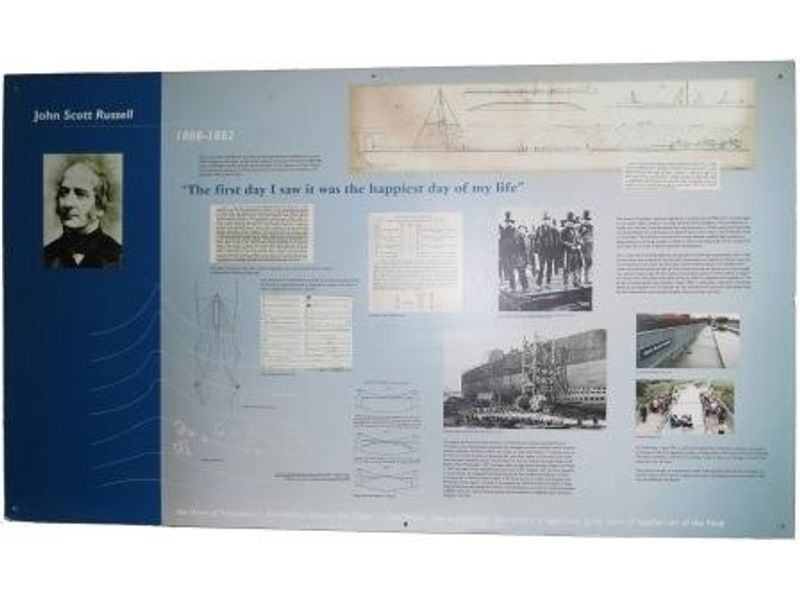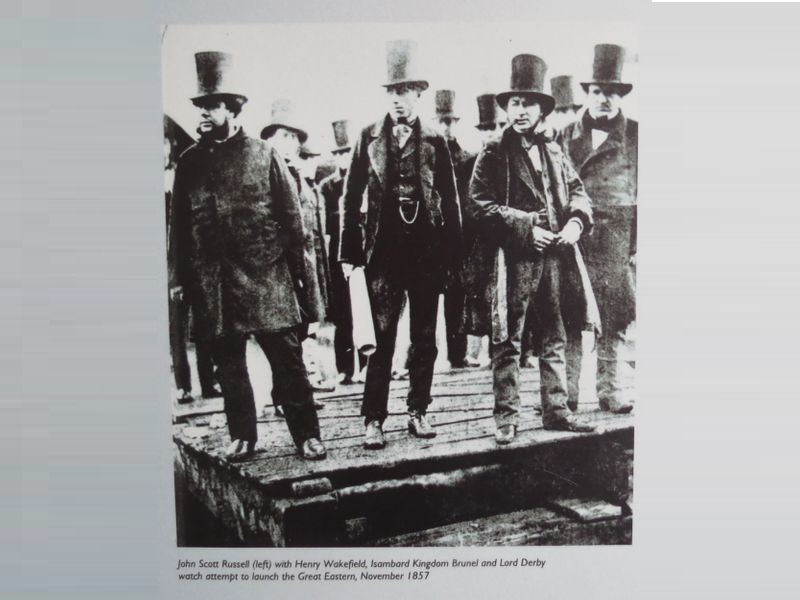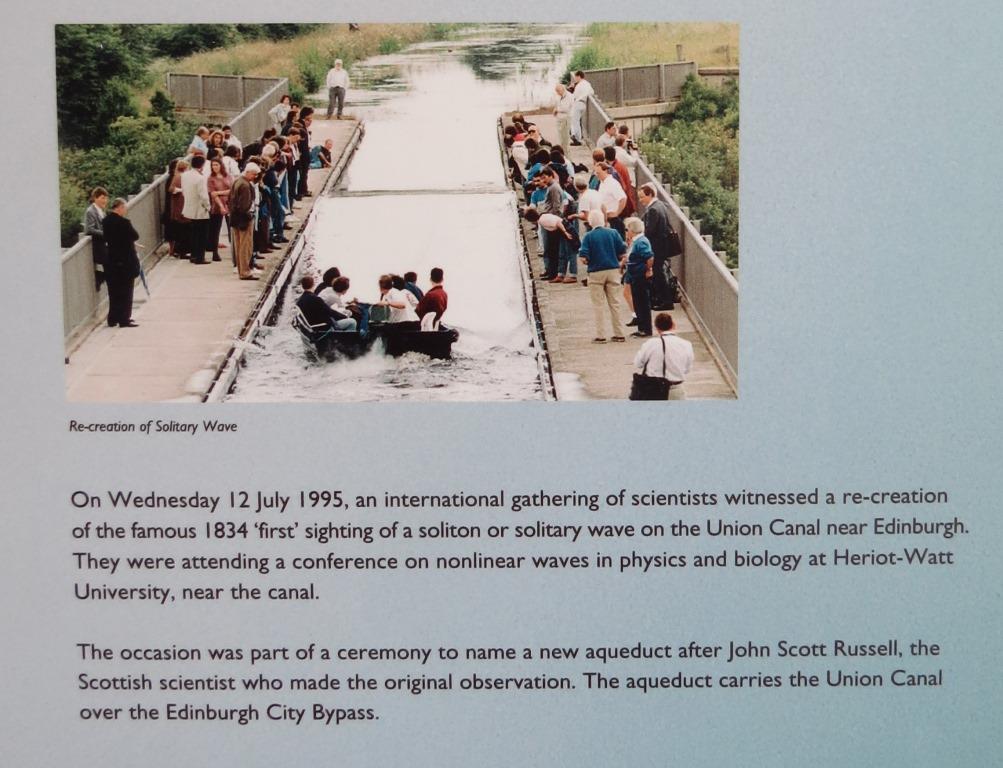Description
Display board chronicling some of the lifetime achievements of John Scott Russell (1808 – 1882).
John Scott Russell FRSE FRS (1808 – 1882) was a Scottish civil engineer, naval architect and shipbuilder who built the SS Great Eastern in collaboration with Isambard Kingdom Brunel. He also discovered of the wave of translation or now known as a soliton. A soliton is a self-reinforcing solitary wave that keeps its shape while propagating at a constant velocity.
A panel on the display board says this about John Scott Russell:
Throughout his life Scott Russell remained convinced that his solitary wave (the ‘Wave of Translation’) was of fundamental importance, but nineteenth and early twentieth century scientists thought otherwise. His fame, however, has rested on other achievements. To mention some of his many and varied activities, he developed the “wave line” system of hull construction which revolutionized nineteenth century naval architecture, and was awarded the Gold Medal of the Royal Society of Edinburgh in 1837. He began steam carriage service between Glasgow and Paisley in 1834, and made the first experimental observation of the “Doppler shift” of sound frequency as a train passes. He reorganized the Royal Society of Arts, founded the Institution of Naval Architects and in 1849 was elected Fellow of the Royal Society of London. He designed (with Brunel) the “Great Eastern” and built it; he designed the Vienna Rotunda and helped to design Britain’s first armoured warship (the “Warrior”). He developed a curriculum for technical education in Britain, and it has recently become known that he attempted to negotiate peace during the American Civil War.
Russell was also a promoter of the Great Exhibition of 1851.
For more on Russell go to https://en.wikipedia.org/wiki/John_Scott_Russell.











